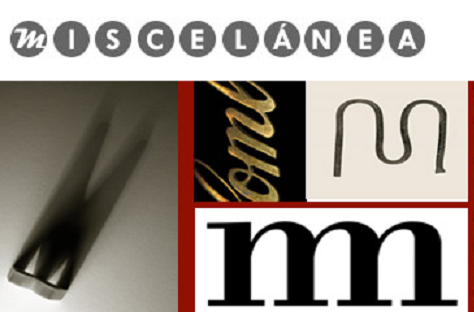“Se habla español: A Certain Tendency in the Western Film”
DOI:
https://doi.org/10.26754/ojs_misc/mj.20079766Palabras clave:
Cine, Géneros cinematográficos, El Oeste norteamericano, Identidad, Sociedad estadounidense, Tierras de frontera, Estudios chicanos, John SaylesResumen
Si en algún momento la tesis de Frederick Jackson Turner sobre la colonización del Oeste titubeó en la confirmación de la importancia de la épica de la frontera en la historia estadounidense, las expresiones culturales que le siguieron, las películas de Hollywood entre ellas, sin duda ayudaron a fraguar y perpetuar una serie de valores e ideales sobre el género, la raza y la tierra que se convirtieron en sinónimo de identidad y designio nacional. Partiendo de estos supuestos tan vagos como reiterados, este artículo examina el papel y el impacto de las narrativas fronterizas en algunos westerns de Hollywood. Las películas estadounidenses no siempre han refrendado la versión oficial de la historia, y a menudo contradicen de diferentes formas la visión homogénea y mítica de la experiencia de la frontera que reiteradamente se ha dado en considerar como genuina y depositaria de la identidad nacional. El autor argumenta que películas como The Ride Back! (Allen H. Miner, 1957), The Bravados (Henry King, 1958) o Man from Del Rio (Harry Horner, 1956), se centran en la alienación del héroe tradicional y en las tensiones sociales en las áreas fronterizas del país y representan el Oeste como el espacio donde localizar la esencia de los Estados Unidos y, al mismo tiempo, como un significante vacío donde se lleva a cabo una disputa por el significado en el encuentro con el otro. Además, este artículo examina una película contemporánea como Lone Star (John Sayles, 1996) para ilustrar en qué medida las películas se sustentan en el lenguaje de los géneros cinematográficos para cuestionar los canales que validan y sancionan unos discursos en detrimento de otros.
Descargas
Referencias
BENJAMIN, Walter. (1979) 1997. One-Way Street. London: Verso.
BLAKE, James Carlos. 1999. Borderlands: Short Fictions. New York: Avon Books, Inc.
CAMPBELL, Neil and Alasdair KEAN. 1997. American Cultural Studies: An Introduction to American Culture. London and New York: Routledge.
CAMPBELL, Neil. 2000. The Cultures of the American New West. Edinburgh: Edinburgh U.P.
CAWELTI, John. 1970. The Six-Gun Mystique. Bowling Green: Bowling Green U.P.
COYNE, Michael. 1997. The Crowded Prairie: American National Identity in the Hollywood Western. London and New York: I.B. Tauris Publishers.
FIEDLER, Leslie. 1960. Love and Death in the American Novel. New York: Criterion.
—. 1968. The Return of the Vanishing American. New York: Stein and Day.
FISHER, P. (ed.) 1991. The New American Studies: Essays from Representations. Berkley: U. of California P.
FOUCAULT, Michel. (1977) 1993. Language, Counter-Memory, Practice: Selected Essays and Interviews. Ithaca: Cornell U.P.
—. 1980. Power/Knowledge: Selected Interviews and Other Writings, 1972-77. New York and London: Harvester Wheatsheaf.
GARCÍA DAVIDSON, Margaret. 1996. “Borders, Frontiers, and Mountains: Mapping the History of ‘U.S. Hispanic Literature’”. In Kowalewski, Michael. (ed.) Reading the West: New Essays on the American West. Cambridge: Cambridge U.P.: 177-196.
HAUSLADEN, Gary J. 2003. Western Places, American Myths: How We Think about the West. Reno and Las Vegas: University of Nevada Press.
REBEIN, Robert. 2001. Hicks, Tribes and Dirty Realists: American Fiction after Postmodernism. Lexington: The University of Kentucky Press.
SIMMON, Scott. 2003. The Invention of the Western Film: A Cultural History of the Genre’s First Half-Century. Cambridge: Cambridge U.P.
TURNER, Frederick Jackson. (1893) 1996. The Frontier in American History. New York: Dover Publications, Inc.
Descargas
Publicado
Número
Sección
Licencia
Derechos de autor 2007 Juan A. Tarancón

Esta obra está bajo una licencia internacional Creative Commons Atribución-NoComercial 4.0.


